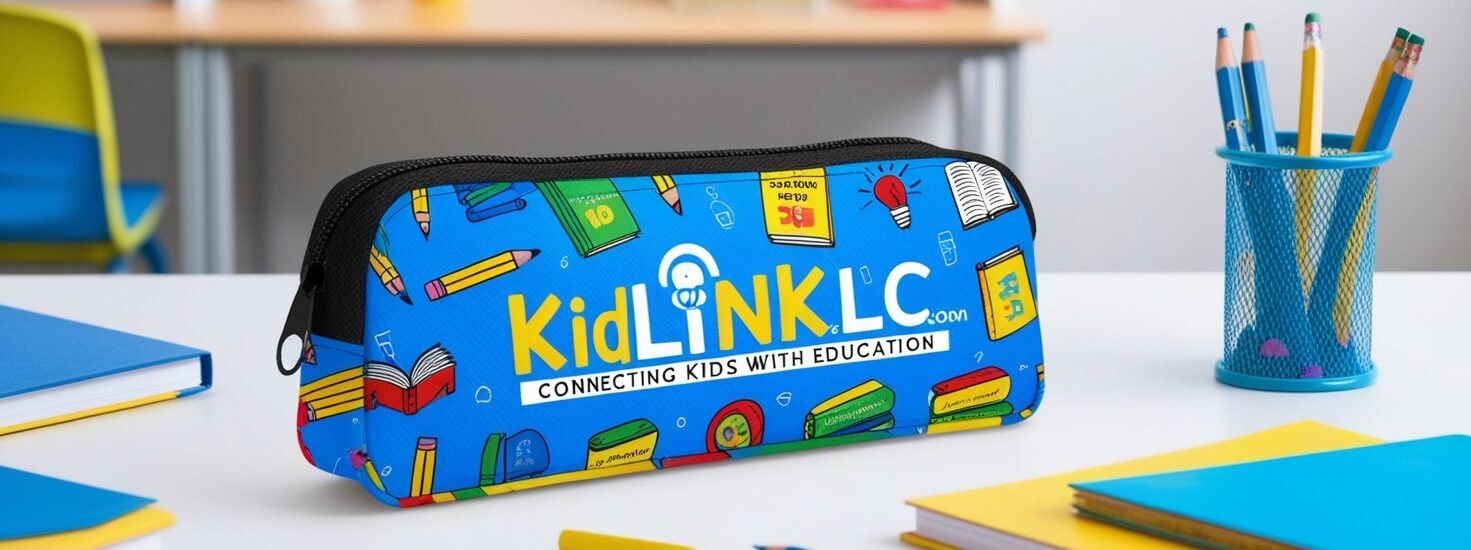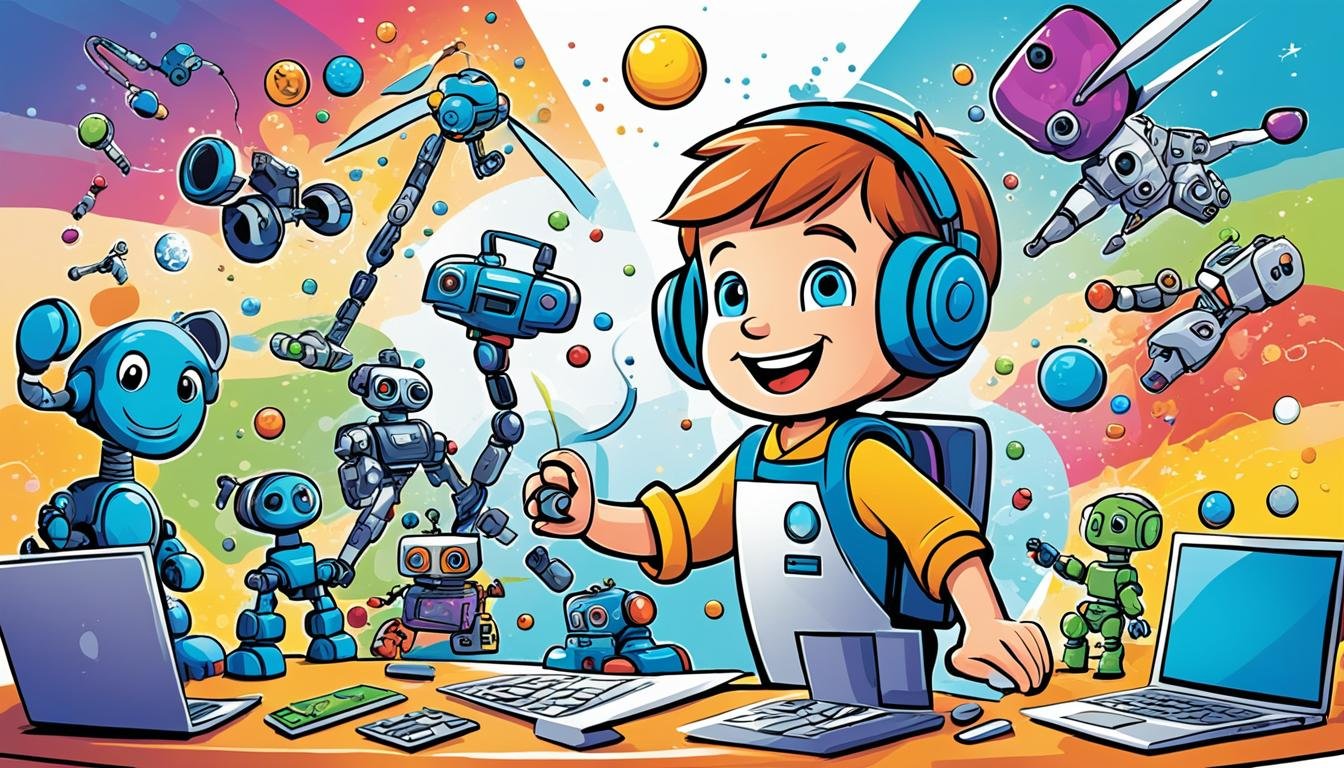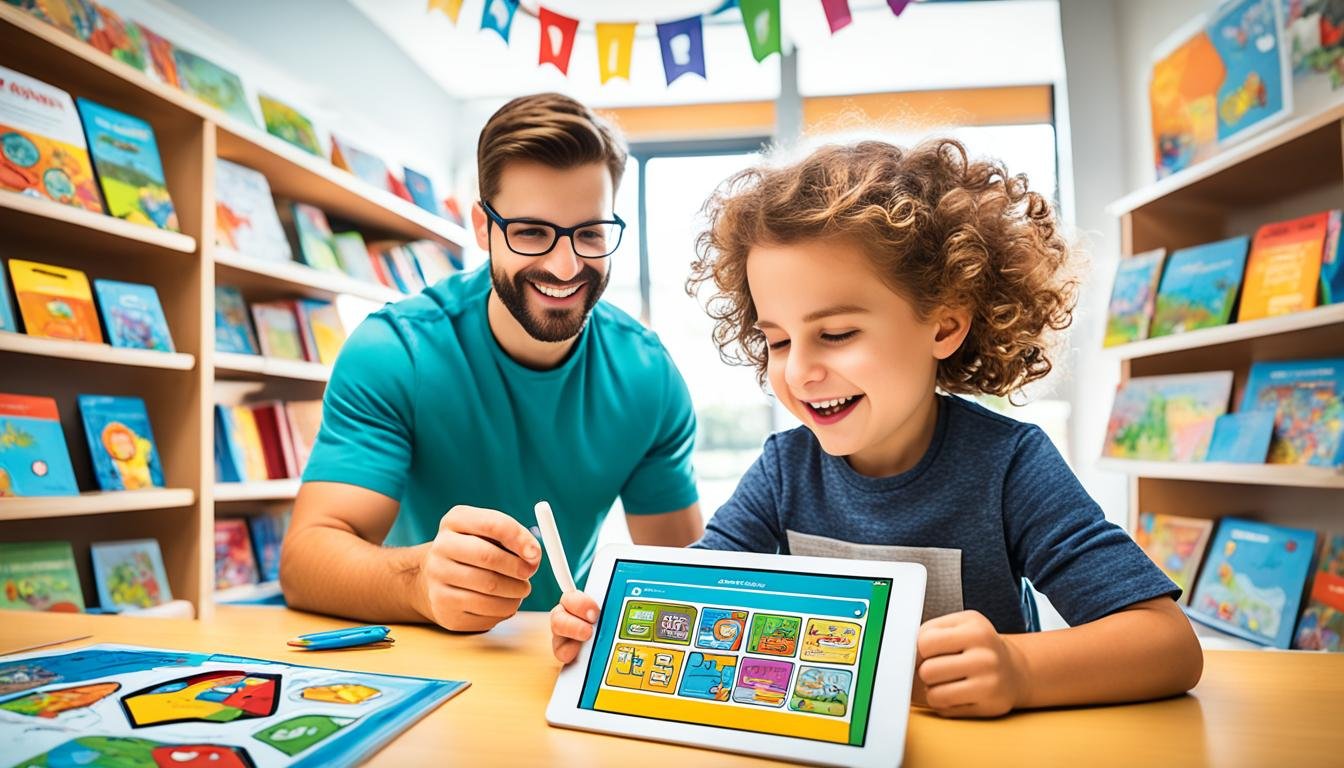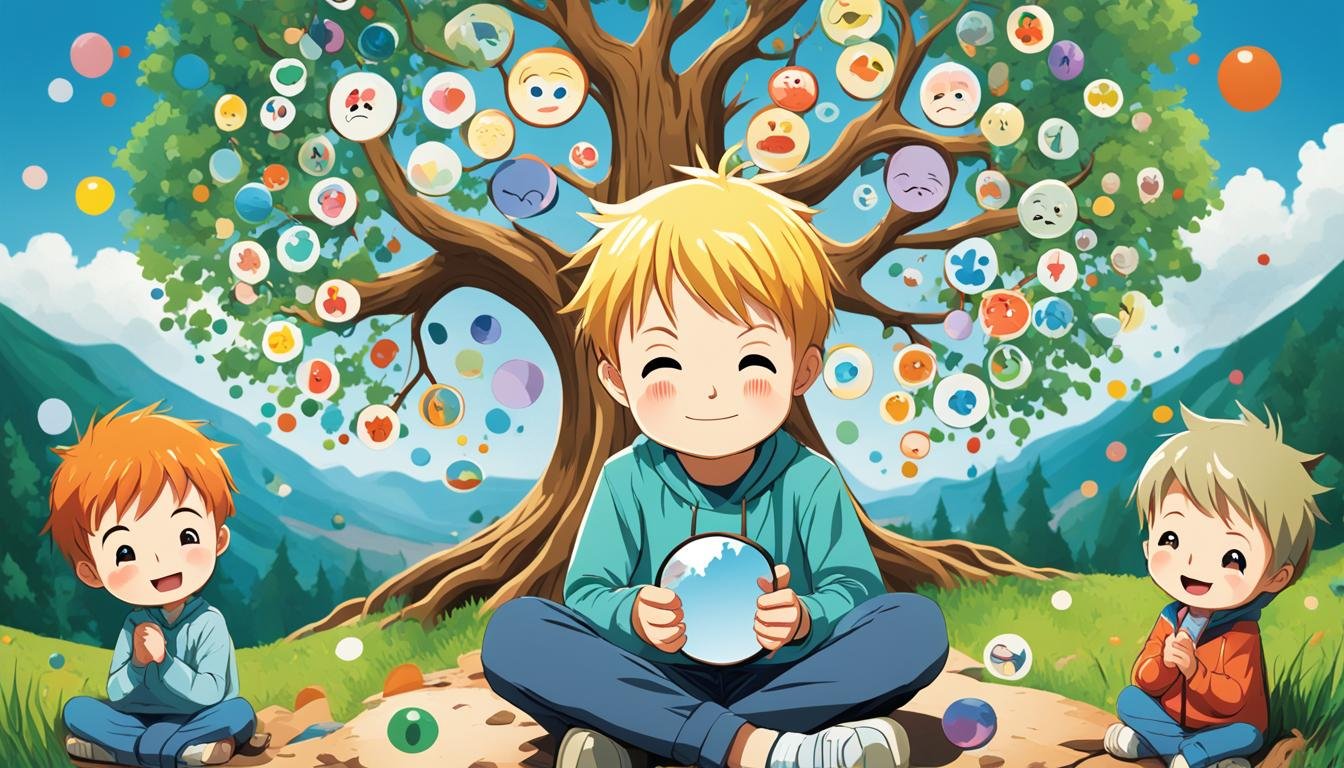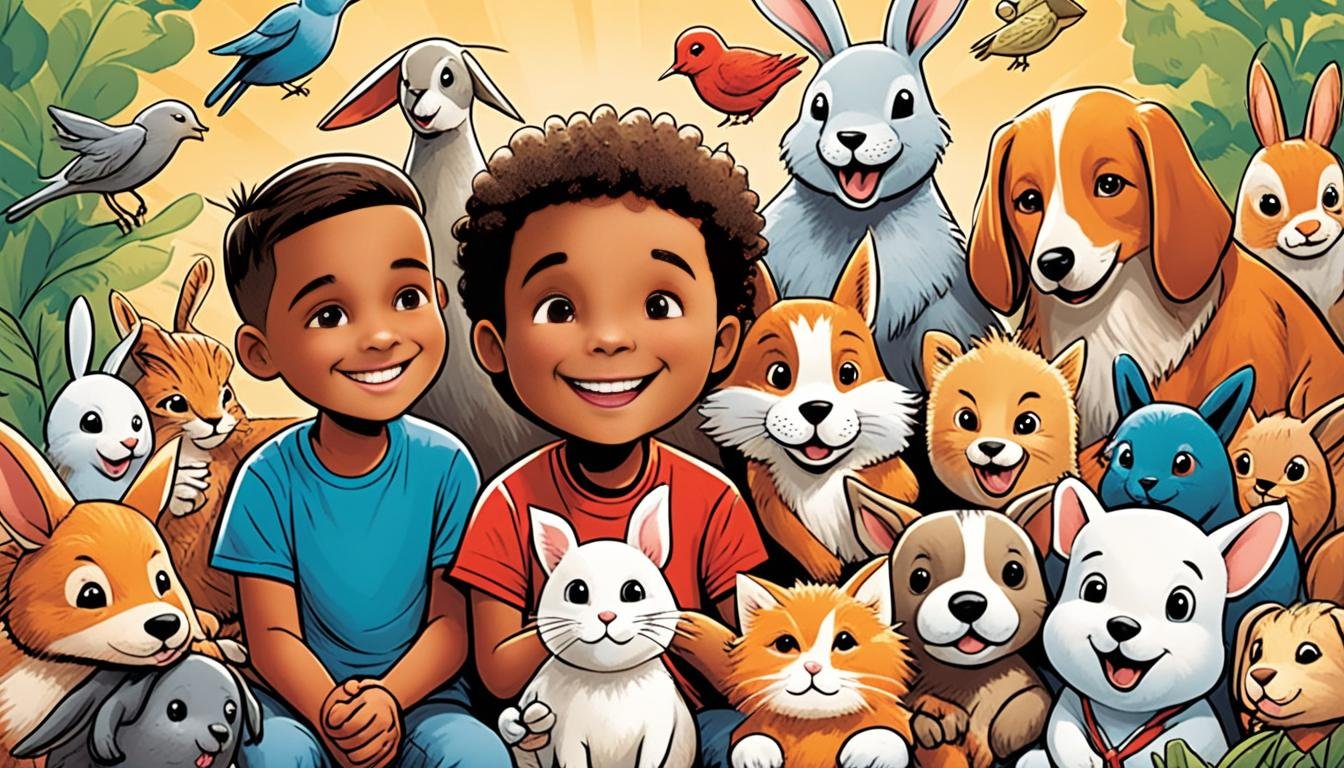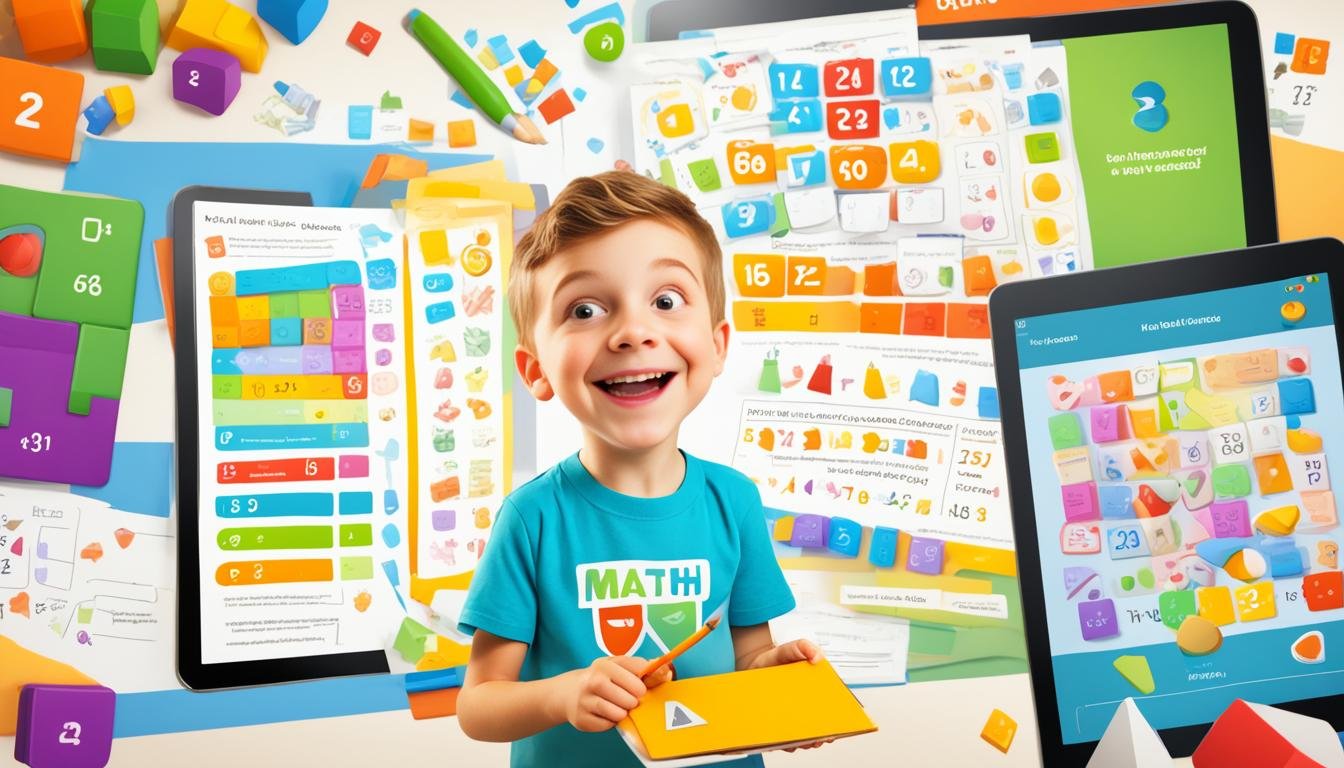Have you ever thought about how books can shape your child’s future? As a parent, it’s not just about teaching the alphabet. It’s about building a love for books that lasts a lifetime. By making reading a part of your home, you help your child find joy in exploring new worlds through stories.
In this article, I’ll share tips that have helped me as a parent and teacher. These strategies aim to inspire your young readers to love reading. From reading together to being a reading role model, every step matters. For more learning resources, check out KidLinkLC.com. It’s a place where kids find great educational tools.
Key Takeaways
- Understanding the long-term benefits of reading in childhood.
- Creating a reading culture at home fosters a passion for literature.
- Reading aloud strengthens parent-child bonds.
- Early exposure to books is crucial for literacy development.
- Setting a reading example encourages children to mimic these habits.
- Designing cozy reading spaces enhances the reading experience.
Understanding the Importance of Reading in Childhood
Reading is key to a child’s growth. Starting early helps improve reading skills. It makes kids love stories, which helps their thinking and speaking.
Books do more than just teach. They help kids think deeply and be creative. Reading helps kids learn new words and understand hard ideas. This sets them up for school success.
Reading regularly makes kids value language more. This improves how they talk and communicate. Studies show that reading early leads to better grades later.
Reading also makes kids feel better and less stressed. In short, reading in childhood has big benefits. It affects their school work, character, and view of the world.
Creating a Reading Culture at Home
Creating a home reading environment is key to building a reading culture. I always keep a variety of books ready. A cozy reading nook encourages everyone to dive into books. Surrounding kids with books helps them develop good reading habits.
Adding books to family traditions makes reading more fun. I aim to make reading a big part of our daily life. This could be reading during meals or having a family reading time. Using fun books to overcome reading resistance keeps it exciting.
Showing kids that reading is important by doing it ourselves helps them want to read more. Talking about our books with them opens up a world of understanding. Small talks about stories and authors can spark their creativity and curiosity.
It’s important to know the rules about reading to keep things respectful. For more info, check out our terms of use page.

| Strategy | Description | Benefits |
|---|---|---|
| Accessibility of Books | Having books available in various locations | Encourages spontaneous reading |
| Reading Nook | A comfortable space dedicated to reading | Creates a peaceful atmosphere |
| Family Reading Traditions | Incorporating reading into family activities | Strengthens family bonds |
| Modeling Behavior | Parents actively engaging in reading | Inspires children to read |
| Sharing Thoughts | Discussing books with children | Enhances critical thinking and imagination |
Reading Aloud: A Timeless Bonding Experience
Reading aloud is great for kids and helps them grow. It’s a special way to connect with family and build strong feelings. When I read to my child, I see their vocabulary grow and their understanding improve. It makes storytime a special moment we all look forward to.
Benefits of Reading Aloud for Children
- Enhances vocabulary and language skills
- Improves comprehension and critical thinking
- Strengthens family bonding through shared experiences
- Encourages a love for stories and reading
- Fosters emotional connections and empathy
Recommended Books for Read-Aloud Sessions
Choosing the right books makes reading aloud fun and interesting. Here are some read-aloud book suggestions for different ages:
| Age Group | Title | Author |
|---|---|---|
| 0-2 Years | Goodnight Moon | Margaret Wise Brown |
| 3-5 Years | The Very Hungry Caterpillar | Eric Carle |
| 6-8 Years | Charlotte’s Web | E.B. White |
| 9-12 Years | Harry Potter and the Sorcerer’s Stone | J.K. Rowling |
Introducing Books Early for Early Literacy
Starting with books for infants and toddlers is key to early literacy. Studies show that early book exposure boosts language and brain growth. Reading daily helps build a strong base for reading later on.
The Impact of Early Exposure to Books
Books spark curiosity and teach sounds, words, and ideas early on. Babies show more brain activity when hearing stories, even before birth. Reading helps make brain connections stronger, improving understanding and talking skills.
Reading to Infants and Toddlers
Reading to young ones exposes them to new words and sentence patterns. Choose books like board books and sturdy picture books with bright pictures. This activity boosts language skills as I use different voices and expressions.
Adding reading to daily routines, like during naps or at bedtime, shows its value. It’s fun for kids and sets the stage for a love of learning that lasts.

For more on how early literacy resources handle data privacy, check out the privacy policies of platforms offering these vital tools.
Setting a Positive Example as a Parent
As parents, we have a big role in shaping our kids’ views on reading. What we do shows our kids how important reading is. By being a reading role model, we can help our kids love books and stories.
Our actions show our kids how much reading matters. This makes our influence key in getting them to enjoy reading too.
Being a Reading Role Model
When I read in front of my kids, I see their curiosity grow. By making reading a priority for myself, I show them its value. This encourages my kids to find their own reading interests.
Having lots of books around helps a lot. I share my reading stories with them to get them excited.
Encouraging Family Reading Time
Regular family reading time is great for bonding. We all read together at a set time, sharing our books and thoughts. This builds a love for reading in our family.
These moments also help us talk more with each other. I love these times because we get to enjoy stories and talk about what we read. For more tips on making reading fun, check out this resource.
Creating Cozy Reading Spaces
Designing inviting corners in the home can make reading more fun for kids. Cozy reading spots are perfect for quiet time and growing a love for books. With the right pillows, blankets, and lighting, any space can become a cozy spot for reading.
Designing a Comfortable Reading Nook
To make a cozy reading nook, think about these things:
- Seating: Choose a comfy chair, bean bag, or floor cushions for an inviting feel.
- Lighting: Soft lighting is key. A reading lamp can make the space cozy.
- Decor: Add personal touches like favorite colors, artwork, or quotes to make it special.
- Organization: Keep books in cute baskets or on shelves for easy access.
Incorporating Reading into Daily Life
Adding reading to our daily life helps build a strong reading habit at home. Letting my kids pick where they want to read, like the porch or their room, makes reading fun. Reading during downtime, like after meals or before bed, makes it a natural part of their routine. This way, they can enjoy reading in different places.

Diverse Reading Materials: Expanding Horizons
Introducing diverse reading materials is key to making reading fun for kids. By exploring different genres, kids can learn about various storytelling styles and views. This keeps reading exciting and keeps them interested over time.
Encouraging Different Genres and Formats
Exploring various genres helps kids understand and appreciate literature more. Consider adding:
- Mysteries that ignite their curiosity
- Fantasy worlds to spark their imagination
- Non-fiction to satisfy their thirst for knowledge
- Poetry to engage their emotions
This way, kids can connect with stories that match their interests and experiences.
Including Comics, Magazines, and Audiobooks
Using comics, magazines, and audiobooks makes reading more fun. Audiobooks benefits are big, letting kids listen to stories on the go. Comics and magazines make reading dynamic and fun.
Fostering a Lifelong Love of Reading Through Choice
Letting kids pick their own books is key to building reading habits. When they choose books that match their interests, they enjoy reading more. This makes reading fun and personal, not just a chore.
Letting Children Select Their Own Books
When kids get to choose their books, they feel more in control of their reading. It’s important to let them explore different topics and styles. This way, they’ll connect with reading on a deeper level.
Books That Cater to Their Interests
Finding books that match my child’s interests is crucial. By watching what they like, I can suggest books that will excite them. This keeps them interested in reading. There are many choices, like:
- Adventure tales
- Animal stories
- Fantasy epics
- Biographies of inspiring individuals
- Graphic novels and comic series

Encouraging my child to try different books helps build a library that reflects their tastes. This not only keeps them reading but also boosts their confidence in choosing books.
| Genre | Examples of Books | Benefits |
|---|---|---|
| Adventure | The Adventures of Tintin, Percy Jackson | Excitement and engagement |
| Fantasy | Harry Potter, The Chronicles of Narnia | Imagination and creativity |
| Non-fiction | National Geographic Kids, Who Was? Series | Knowledge and exploration |
| Graphic Novels | Dog Man, Rollergirl | Visual literacy and reading confidence |
Library Visits: Fun Adventures in Reading
Going to the library often is a great way for kids to start reading adventures. It’s more than just getting books. It’s about sparking curiosity and keeping kids engaged with different programs and events. Adding fun activities like storytime or crafts makes these trips unforgettable.
Letting kids pick their own books helps them feel more independent. This makes their library experiences even more special.
Making Library Visits Exciting
To make library trips more exciting, plan ahead by looking at the library’s event calendar. Joining in on themed activities can make reading more interesting. Talking to librarians can also be thrilling, as they give great book recommendations.
This way, kids start to see the library as a place full of adventures. They feel excited to explore new books and stories.
Benefits of Having a Library Card
Library cards are very important. They give kids a sense of ownership in their reading. With a card, they can check out books and feel responsible for returning them. This teaches them about accountability.
Kids feel proud to use their library cards. This motivates them to keep visiting the library. For more tips on building a love for reading, check out this link.
Incorporating Technology: Ebooks and Audiobooks
In today’s fast-paced world, technology has changed how we read books. Ebooks are easy to get to with just a few taps on a device. They are great for kids who don’t have easy access to physical books. Audiobooks offer another way to enjoy stories, perfect for young minds.
Ebooks and audiobooks meet different learning styles. Kids who find reading hard might enjoy listening to stories more. Audiobooks can teach new words and types of stories, making reading fun. They also let families enjoy books anywhere, fitting into busy lives.

These formats let families pick what works best for them. You can read ebooks at home or listen to audiobooks on a road trip. Both help grow a love for reading. I look into how audiobooks help readers of all, making reading fun and new.
| Feature | Ebooks Advantages | Audiobooks Benefits |
|---|---|---|
| Accessibility | Instant access on devices | Listen anywhere, anytime |
| Variety | Wide range of titles and genres | Introduction to diverse storytelling |
| Learning Engagement | Interactive reading features | Enhances listening and comprehension skills |
| Portable | Multiple books in one device | Perfect for travel or commuting |
Using this technology doesn’t mean we’re giving up on traditional reading. It adds new ways for kids to connect with stories. By using ebooks and audiobooks every day, we help kids develop a deep love for books.
Engaging in Book Discussions
Talking about books is key to making reading fun for kids. When we chat about what they’ve read, it helps them understand better. It lets them think deeply and feel closer to the stories.
These talks help kids make personal links with the stories. It turns reading into something interactive and meaningful.
Talking About Characters and Themes
Looking at characters and themes together helps kids get more from the book. We talk about why characters make certain choices. This helps them see the deeper messages in stories.
It also makes them think more critically and connect with the stories on a deeper level. This way, reading becomes more than just looking at words.
Connecting Stories to Personal Experiences
Linking books to our lives makes stories feel more real. I ask my kids to see how characters or stories relate to their own feelings or experiences. This helps them understand better and grow in empathy and emotional smarts.
It also helps them remember what they read and feel a personal bond with each book.

| Discussion Focus | Benefits |
|---|---|
| Character Analysis | Encourages critical thinking and empathy |
| Thematic Exploration | Deepens understanding of life lessons |
| Personal Reflections | Fosters emotional connections to the story |
| Connecting Stories to Daily Life | Enhances retention and relevance of reading |
For more tips on making reading a lifelong joy, see this helpful guide at encouraging a lifelong love of reading.
The Joy of Reading Together: Family Activities
Reading together as a family creates lasting memories and deepens our love for stories. It brings us closer, sharing moments that strengthen our bonds. I love setting up themed reading nights to spice up our reading time. These events focus on certain genres or holidays, making reading fun and creative.
Creating Themed Reading Events
Themed reading nights are a hit in our household. We pick a theme and enjoy snacks and drinks that match it. For a fantasy night, we read magical tales with fairy-tale snacks. It’s a great way to bond and spark creativity in our talks.
Visiting Author Events or Literary Festivals
Going to literary events is another great way to bond over books. Meeting authors inspires my kids and deepens their love for stories. These events often have fun activities and workshops for kids. They’re both educational and fun, building a sense of community and excitement about reading.

Encouraging Exploration Beyond Books
Encouraging kids to explore topics linked to their reading helps bridge the gap between stories and real life. Parents can make reading more exciting by adding hands-on activities. These activities show how stories come alive in the world.
For example, visiting a museum tied to a book’s theme can spark a child’s interest. It helps them connect the story to real events or art. Watching movies based on their favorite books also deepens their understanding of the story’s messages.
“Experiences shape understanding, transforming readers into explorers of the world around them.”
To make reading more interesting, parents should add these activities to their child’s life. They can encourage:
- Field trips to art galleries or historical sites, inspired by books they’ve read.
- Family movie nights featuring adaptations of stories to stimulate discussions.
- DIY projects, like creating a themed craft or game based on a character or setting.
These activities not only spark curiosity but also grow a child’s love for reading. 
| Activity | Purpose | Literary Connection |
|---|---|---|
| Museum Visit | Enhances understanding of historical and cultural contexts | Relate to novels set in particular time periods |
| Film Adaptation Night | Facilitates discussion about character development and themes | Connects narratives between text and screen |
| Themed Crafts | Promotes creativity and personal connection to stories | Brings characters and settings to life through hands-on activities |
This approach not only builds experiential learning but also shows kids how to deeply connect with literature. By exploring beyond books, kids develop a passion that enriches their daily lives.
Instilling a Lifelong Love of Reading Through Routines
Creating strong reading routines helps make daily reading a part of life. By making reading a regular part of the day, I help children enjoy books more. It’s important to be consistent, as it makes them feel secure and engaged.
One great way to do this is by making bedtime reading a special part of their night. It becomes something they look forward to.
Establishing Daily Reading Habits
Starting daily reading habits is easy with a set time for books. Mornings or evenings are good times for kids to relax and get lost in stories. Here are some ways to make this happen:
- Set aside a time for reading during meals or when moving from one activity to another.
- Give reading challenges with rewards for sticking with it.
- Use calendars or charts to keep track of reading progress.
Reading Before Bedtime as a Routine
Bedtime reading helps kids relax and strengthens our bond. Reading stories together makes bedtime a peaceful time. Here are some tips for this routine:
- Pick books that are right for their age to keep them interested.
- Let kids pick their own bedtime stories.
- Read for the same amount of time every night.

These reading routines lay the groundwork for a lifelong love of reading. With persistence and creativity, I can help children see the magic in reading every day.
Utilizing Book Subscriptions for Continuous Engagement
In my quest to foster continuous reading habits, I’ve found book subscriptions to be a great tool. They send new books right to our doorstep, keeping reading exciting. Subscriptions let me introduce kids to many authors and genres, sparking their curiosity and broadening their reading world.
Book subscriptions bring many benefits:
- Regular access to new stories.
- Opportunities to explore different genres.
- A personalized reading experience tailored to individual preferences.
- Encouragement of discussions about the books received.
Popular subscription services focus on engaging with books that kids love. Whether it’s adventure stories, fantasy novels, or learning books, there’s always something new. This flow of new books keeps kids excited, helping them stick with reading.
| Book Subscription Service | Age Group | Monthly Selections | Highlights |
|---|---|---|---|
| OwlCrate Jr. | 8-12 years | 1 book + goodies | Themed boxes with exclusive items |
| Bookroo | 0-5 years | 2 or 3 books | Board books and picture books |
| Little Fun Club | 2-8 years | 2 books | Books tailored to child’s interests |
Using these book subscriptions helps kids develop continuous reading habits that stick. They get excited about new stories and grow to love reading even more.
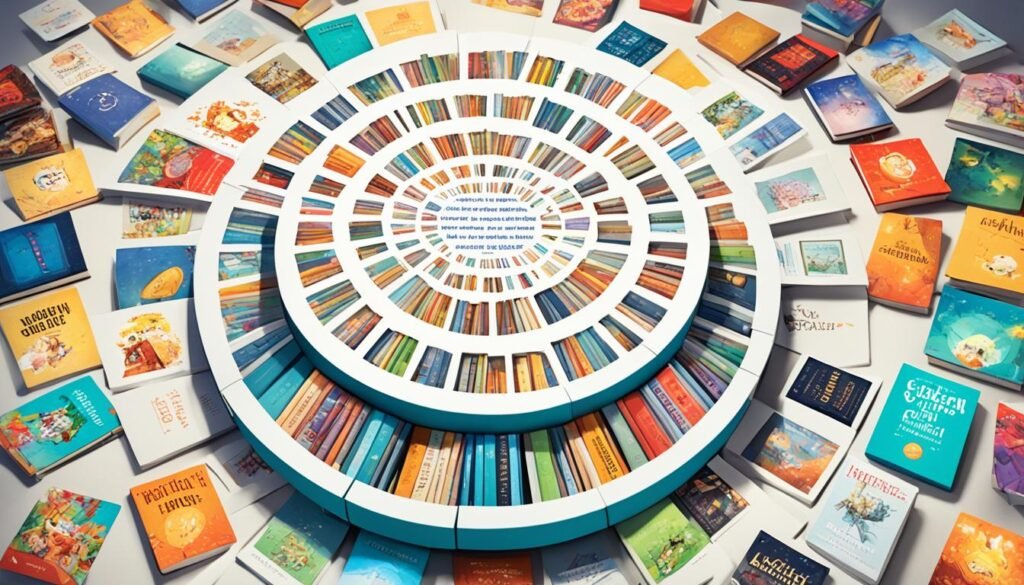
Conclusion
Reflecting on this article, it’s clear that teaching kids to love reading is crucial. It helps with their language skills, school success, and emotional growth. By making reading fun and creating a cozy space for it, I can help my kids keep loving books as they grow.
Encouraging kids to try different types of books makes reading fun for them. Using technology like ebooks and audiobooks can also make stories more exciting. For more tips on making reading a favorite pastime, check out this resource on cultivating a love for.
It’s all about making reading a special part of their lives. With the right support and actions, I can help my kids start their reading adventures. This will give them a lifelong love of reading that enriches their lives and prepares them for the world.
FAQ
How can I help my child develop a love for reading?
What are the benefits of reading aloud to my child?
At what age should I start reading to my child?
How can I encourage my child to choose their reading materials?
Why are library visits important for fostering a love of reading?
What role does technology play in encouraging reading?
How can I make reading a consistent part of my child’s routine?
What family activities can promote a love for reading?
Source Links
- https://zenhabits.net/how-to-instill-the-love-of-reading-in-your-child-or-yourself/
- https://www.internationalschoolparent.com/articles/light-the-spark-igniting-a-lifelong-love-of-reading-in-our-children/
- https://triadmomsonmain.com/my-blog/ellens-book-nook-tips-to-encourage-a-lifelong-love-of-reading/
